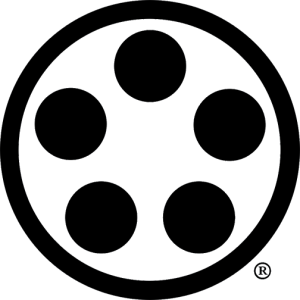Words as Weapons: The Warrior Poet
Aaahhh...True kenjutsu. Mifune Toshiro as a big, tough, and slightly scruffy looking swordsman, striding down the center of the street to take on a couple of dozen opponents single handedly... tales of Miyamoto Musashi, with a sword in each hand, attacking the entire Yosioka clan...and don't forget Tsukahara Bokuden, the subject of countless dojo stories.
Such are the dreams of sword students. Dreams of glory and war and spirit. The occasional bits of (truthful) trivia, such as Musashi never bathing, only serve to add spice to the legends.
“The concept of a Hell’s Angel doing water-colors just doesn’t fit into their picture of a real warrior.”
But, what about the fact that Musashi was also an acclaimed artist, or the 100 famous poems of Tsukahara Bokuden? When faced with trivia like this, most students assume a somewhat puzzled expression. The concept of a Hell's Angel doing water-colors just doesn't fit into their picture of a real warrior.
It is, however, a part of the grand design of Japanese martial arts. The Japanese don't divide things up in terms of left-brain and right-brain activities. To them, a person is a complete package and, if the artistic component is not as well developed as the martial one, the person is not complete. So, if you would truly master budo, you must come to understand Japanese poetry and come to think of creating a haiku as just as much a part of the Way of the Warrior as kiri-oroshi or seiken-tsuki.
Format
There are several different styles of Japanese poetry, and they all tend toward lines of five or seven syllables.
Choka: 朝霞 A long series of lines of 5-7 syllables, concluded with two lines of 7-7 syllables.
Haikai: 俳諧 A light-hearted, sometimes humorous, haikai-no-renga.
Haikai-no-renga: 俳諧の連歌 A long poem in the pattern of 5-7-5-7-7 syllables (repeated).
Haiku: 俳句 The fundamental element of most poems. It has three lines of 5-7-5 syllables.
Hokku: 発句 A haiku that serves as the open verse of a longer poem.
Kami-no-ku: 上の句 The first three lines of a tanka.
Katauta: 片歌 A three-line poem (archaic) of 5-7-7 syllables.
Nagauta: 長唄 Same as choka.
Renga: 連歌 A formal haikai-no-renga, with alternate verses composed by different poets.
Sedoka: A six-line poem of 5-7-7-5-7-7 syllables.
Shimo-no-ku: 下の句 The last two lines of a tanka.
Tanka: 短歌 A five-line poem of 5-7-5-7-7 syllables.
Uta: 歌 Same as tanka.
Waka: 和歌 A generic term for all forms of Japanese poetry. This does not include poems done in the Chinese style.
Yakazu-renga: A haikai-no-renga composed (quickly) by one person. (Ihara Seikaku, in 1684, composed 23,500 poems in one day.)
Aesthetics & Conventions
There are certain formal rules for the construction of poetry in the Japanese style. (Although, like all rules, these are frequently broken by great masters.) Let's look at one famous poem written by Teikei in the year 1202...
Oiraku wa
yuki no uchi ni zo
Omoishiru
Tou hito mo nashi
yuku hata mo nashi
. . .
To be old,
now amid the winter snow,
I understand:
No one comes to visit me,
there is no place to go.
Sound depressing? Before you make a flat statement to that effect, consider some of the subtleties of the poem.
Season: Every poem should, either directly or indirectly, give reference to the season. (From above: ...winter snow...)
Break: There is a break, called a caesura, at the end of the second or third line. In this example it is created by using a sentence-final form (-iru) for the verb omoishiru. The placement of the caesura is critical and has a profound effect on the overall tone of the poem.
Imagery: This is the big one. No matter what the particular form of poetry, it must convey a vivid emotional image.
Movement: Poems will normally have some sense of physical motion. (From above: "...comes to visit...")
Mystery: Something should be left unsaid. This sense of mystery is called mugen and is very important. (From above: Understand what?)
Double Entendre: Japanese is rich in homonyms, and the use of double meanings in highly valued. (From above: -nashi means without. It can also indicate an accomplishment, so the poem can have either a positive or negative feeling.)
Read the poem again and note that you can feel like, "Woe is me...no one ever visits," or "Whoopee! Alone at last!" Read again, and again, and again, and you will note that it is an endless feast. Each line conveys a feeling, and then a different feeling.
"But I'm not an artist!" you cry. "I can't create something like that."
No, you can't.
yet....
Haiku
The haiku started as merely the opening verse of a longer poem but, over the centuries, it came to be an art form of its own.
Matsuo Munefusa (1644-1694), who took the name of Basho, was the man most responsible for this. Basho means banana tree, and he adopted this name in 1681 after moving into a hut with a banana tree in its yard. As a young samurai, Basho was in the service of Todo Sengin Yoshitada of Iga Province. When Yoshisada died in 1666, Basho became ronin and traveled throughout Japan writing haiku. His poetry is now so famous that it is recognized as the work of genius throughout the world.
The Form
A haiku is composed of three lines of 5-7-5 syllables, one of which must refer to the season. Sometimes this is very indirect, as in Basho's most famous poem...
Furuike ya
kawazu tobikomu
Mizu no oto.
. . .
The old pond,
a frog jumps in:
splash.
In this case, the season is given by the frog. (Frogs aren't active during the winter.)
So, that seems simple enough. Three lines and seventeen syllables should be easy. There is, however, quite a bit more to it.
The mistake most Westerners make when attempting to compose a haiku is picking an intellectual subject. For example: "I'm going to write about how I feel when I visit the dojo." No! You're not in the dojo; you're at your desk trying to write a poem. Haiku work best when used to describe a moment in time, a physical sensation or emotion that you feel right now, so the time to write a haiku about the dojo is when you are actually in the dojo.
To see how this works, let's start with something basic and see what we can do with it...
Sitting at my desk
trying to write a poem
this isn't so hard.
I just knocked that one out to give us a place to start. It has the classical 5-7-5 structure, but that's about all you can say for it.
Sitting at my desk
trying to write a poem
snip! snip! garden shears.
The modification was suggested by a gardner busily at work outside my apartment. Now, while this does get the season into the poem, it's still not very good. So, how about...
Sitting at my desk
listening to summer sounds
writing a poem.
Better, but still no cigar. Where's the mystery?
Trapped by my job,
I listen to summer sounds
and dream of freedom.
Now we're getting somewhere. But, I pushed that first line a bit. Trapped is, technically, two syllables but it is normally slurred into almost a single sound. Let's make one final modification...
Trapped by my karma,
I listen to summer sounds
and dream of freedom.
This isn't great, it's not even very good, but it is a true haiku. I could sit here for a few more hours and, possibly, come up with something impressive.
But, there are those sounds of summer....
RENGA
Haiku, as you saw from the last article, aren't really that difficult. Given a basic structure, you can usually hack at it until you come up with something that will, at least, not be too embarrassing.
But, then there is renga, and this is what separates the sheep from the wolves. A renga is a linked verse, and it is normally created as a type of shiai. Think of renga as jiyu-kumite with haiku as the weapons: One poet creates a haiku, and another composes the two cap lines of 7-7 syllables and then uses this to create his own haiku. Traditionally, a complete renga will contain 100 or 1,000 verses, with a maximum of two minutes allowed per verse.
(I recently watched a renga contest on the local Japanese television channel, and the way it was run was quite interesting. The poets, there were eight, were attired in formal kimono and hakama, and seated on zabuton. The host gave the opening verse and then the poets took turns working on it. The loser of each round gave up his zabuton, which was transferred to the winner's position. So, at the end of the contest, the winner was sitting on a tall stack of cushions and the losers were sitting on the floor.)
And now to work. Let's start with the haiku from the last article:
Trapped by my karma,
I listen to summer sounds
and dream of freedom.
Care to take a try for the 7-7 cap lines?
Freedom is but a shadow
and all your summers must end.
And now to take that as the lead in for a new haiku, and try to give it a happier feeling...
But in my dojo
be it hot or cold there is
beautiful slavery.
But, I'm still sitting in this darned room...
Your dojo may cut these chains
but my dreams still cry softly,
Come run through the grass
and leave the work till later
Lest green turn to gray.
Lots of fun, ne? I'm not much of a poet, and a computer screen isn't very inspirational, but this should at least give you an idea of how it works.
The Samurai Connection
Aside from the short mention of Basho, I haven't talked too much about the connection between poetry and budo. It's rather obvious if you think about it.
When you learn a new kata you go through stages. At first, you are trapped within the kata ("...my right foot goes there, and my left hand does this, and...") but, after enough repetitions, your body takes over and you can do it without thinking. This is called coming out of the kata. The nicest part of coming out of a kata is that it frees you to express your spirit in the kata: no longer just a rigid sequence of techniques, the kata comes alive and displays your feelings about it.
“Locked within its structure of 5-7-5, you must express the inexpressible and, like any other martial art technique, you must do so right now.”
The key point is that you can't have a great demonstration of kata without great emotion. Great disciplined emotion. And that is just what a haiku is. Locked within its structure of 5-7-5, you must express the inexpressible and, like any other martial art technique, you must do so right now. Yes, it takes some hard work before you can start enjoying yourself, but what doesn't? Traditional budo is not known for instant gratification, so you should be used to working on the basics for a few years.
The samurai regarded an ability to respond, appropriately and elegantly, to a haiku as an indication of a well focused, powerful, and generally superior spirit. In a tea-house or on a battle-field, a warrior was expected to be as fast with his words as he was with his sword. True, not everyone could do this, but then not everyone was permitted to sit at the head of the table with the daimyo.
The End


